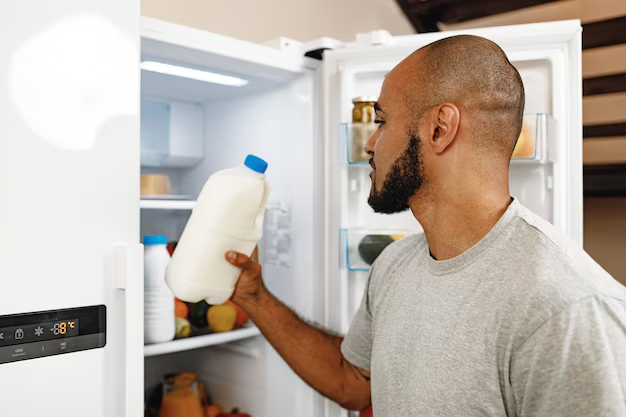Why Your Refrigerator Might Not Be Cooling Properly
When you open your refrigerator expecting the usual blast of cold air, only to be met with a concerning warmth, it might feel like your appliance has betrayed you. You're not alone—many people experience issues with their refrigerators not cooling properly. Let's explore the various possible reasons for a refrigerator not getting cold, how you can diagnose some common issues, and what steps you can take to restore your appliance's cold conditions.
Common Reasons Your Refrigerator Isn't Cooling
1. Temperature Settings
Before diving into more complex issues, start simple. Check if the temperature settings were accidentally adjusted. Ideally, the refrigerator should be set between 35-38°F (1.6-3.3°C). If the temperature setting is too high, adjust it to a cooler set point and wait for a few hours to see if this resolves the problem.
2. Blocked Air Vents
Ensure that the air vents inside both your refrigerator and freezer compartments are not obstructed by food items. These vents facilitate proper air circulation and temperature regulation. Tip: Avoid over-stuffing your refrigerator as overcrowding can block these vents.
3. Dirty Condenser Coils
Refrigerators often have condenser coils located at the back or underneath the unit. When these coils become coated with dust or debris, they can’t efficiently release heat, causing the refrigerator to work harder and less efficiently. Regularly cleaning the coils with a vacuum cleaner or a coil brush can improve your fridge's cooling capability.
4. Faulty Door Seals
A fridge door that doesn't close properly can prevent your appliance from maintaining a cool temperature. Check the gasket—the rubber seal around the door—for cracks, tears, or an improper seal. You can test the seal by closing the door on a piece of paper. If you can pull the paper out without any resistance, the gasket may need replacing.
5. Malfunctioning Thermostat
The thermostat regulates the cooling cycle of your refrigerator. If it's faulty, the appliance might not trigger its cooling process at all. If you suspect this, consulting with a professional to assess and replace the thermostat might be necessary.
Deeper Mechanical Issues
1. Failed Evaporator Fan
The evaporator fan is responsible for circulating air over the evaporator coils and into the fridge and freezer compartments. If the fan isn’t working, cold air won't spread throughout the compartments. This issue often requires replacing the fan or motor and should be addressed by a professional.
2. Defective Compressor
A refrigerator’s compressor is its heart, pumping refrigerant through the coils and helping maintain temperature. If the compressor isn’t running, it could be due to failure in the overload relay or the compressor itself. Given the complexity of this repair, professional assessment and service are advisable.
3. Problems with the Start Relay
The start relay helps kickstart the compressor. If it's defective, the compressor might not function consistently, or at all. Unplug the refrigerator, remove the relay, and test it with a multimeter, if you're comfortable with electronics, or have a service technician evaluate it.
Preventative Maintenance Tips
To minimize the likelihood of your refrigerator experiencing cooling issues, consider these proactive strategies:
- Regular Cleaning: Clean the condenser coils every six months to ensure they remain free of dust and debris.
- Check Door Seals: Inspect the door gaskets routinely for signs of wear or damage and replace them if necessary.
- Optimal Loading: Avoid overloading the fridge, as it can impede essential airflow and put extra strain on mechanical components.
- Temperature Monitoring: Use a fridge thermometer to verify the internal temperature stays consistent with your settings.
Practical Steps to Try Before Calling a Professional
To help summarize, here's a quick troubleshooting checklist with practical steps you can take to determine why your refrigerator may not be cooling:
| 🚫🧊 Refrigerator Not Cooling? Try This First! |
|---|
| ✅ Ensure temperature settings are correct. |
| ✅ Check for blocked vents or airflow issues. |
| ✅ Clean dirty condenser coils. |
| ✅ Inspect door seals for damage. |
| ✅ Listen for unusual sounds indicating fan issues. |
| ✅ Verify the compressor is operating. |
| ⭐ Call a technician if in doubt. |
When to Seek Professional Help
While diagnosing refrigerator issues is often achievable with these regular checks, some problems transcend a simple fix—especially when mechanical components like the compressor or evaporator fan are involved. Should you be unable to identify the cause or if your attempts don’t resolve the cooling issue, engage a professional appliance technician. Their expertise will not only save time but potentially lengthen the lifespan of your refrigerator by ensuring appropriate repairs.
In conclusion, while a refrigerator that isn’t cooling can be frustrating, addressing the problem with a structured approach can often lead to a resolution. By understanding and implementing regular maintenance, you're more likely to prevent future disruptions. Above all, remember that while certain repairs are best left to the experts, a well-informed homeowner can often manage initial diagnosis and simple solutions.
